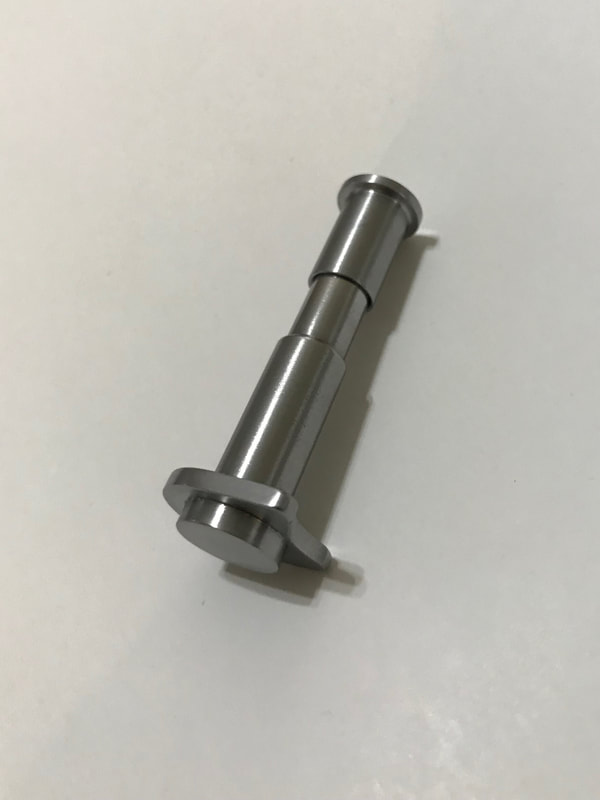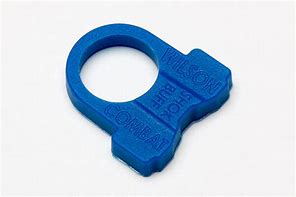|
Basic Browning ACP type recoil system mechanisms
Recoil technology systems for 1911 based handguns generally include at least a spring and a mechanical arrangement to support the spring. Some systems also include a damper and/or a buffer in an overall mechanical arrangement.
Springs, dampers, and buffers may share features and characteristics or be integrated combinations. |
|
Spring
|
Damper
|
Buffer
|
|
Spring
1911 based handguns or other automatic and semi-automatic firearms generally require a source of potential energy that may be readily converted to motive force for reacting with gun bolt or slide assemblies. The source of potential energy is commonly a spring. This spring is usually called a recoil spring and it is a mechanical spring or combination of multiple springs used to react and position a slide assembly. A spring may be similar to an automotive suspension spring. Another descriptive term for "recoil spring" in the art of firearms is "reaction spring". A spring may perform multiple functions. A primary function is usually providing motive force during gun bolt or slide closing. A secondary function may be holding a gun bolt or slide in battery. In general practice a spring or multiple spring assembly may function with or without additional integrated motion controls or vibration isolation mechanisms. A spring may be configured more of a highly variable rate device or a "progressive spring" or a spring may be configured as an assembly of components that function as a variable rate device. Some firearms may use a spring comprised of multiple spring sub-assemblies that may act dependent or independently. The multiple spring subassembly type devices have a long history in 1911 based handgun applications. The first production 1911 based handgun to use multiple spring sub-assembly was the COLT® ACE. Bullseye gunsmiths started using multiple spring sub-assembly type systems in the 1950's to reduce the metal to metal contact for high volume bullseye competition shooters and the use of these systems continues to this day. The systems of this type are primarily used to provide a staged increase of spring energy to and from full slide opening. The systems can generally be constructed to provide more abrupt increases than a single spring might be capable of doing through the same duration of compression and rebound. |
|
Damper
1911 based handguns can use integrated motion control and energy absorption / dumper, or damper mechanism or damper motor in addition to a spring. A damper is used to control spring motion by absorbing energy from the spring. The damper may also reject energy to a system other than the spring. A damper may be similar to an automotive shock absorber. We're taught that In the case of fluid or gas type dampers the complexity and impracticalities have prevented practicality. Although the concept of a semi-automatic handgun fluid or gas damper is well-know within the art, most of what is known about doing it has historically been an exercise in "why it cannot be done". Most concepts include constant pressurized gas or liquid confinement and there was not a single successful 1911 based gas damper system to give as a specific example until 2019. The first practical fluid or gas damper for 1911 based handguns was made by Thomas A. Graves in 2019 and applied to a CZ 75 / 85 series handgun. This new technology can work with open air an is not necessarily dependent on mechanical seals or continuous fluid confinement. The characteristics of the new technology have allowed it to be effectively applied to multiple 1911 based handguns as integrated componentry. Damper motor equipped handguns generally completely negate the use of traditional "buffers" without consumable parts and with characteristically increased energy rejection and decreased impact forces. Damper motor equipped handguns may also completely negate the use of "multiple spring type assemblies" because they can have increased resistance or multiple stages of increased resistance to rearward slide travel without an equivalent and corresponding decrease in slide dwell duration, and increase in forward slide velocity. The Graves damper motor is a radical departure in 1911 based handgun technologies. In certain applications this technology's increased effectiveness and practicality is unmatched. The damper motor is now a pivotal technological factor in maximizing performance and power levels in 1911 based handguns. |
|
Buffer
Buffers may be used to isolate impacting surfaces. In some firearms including 1911 type handguns a buffer may absorb and re-radiate microscopic or short period impact energy to minimize firearm structure deformation or to gain other advantages. A buffer or multiple buffers may be used in recoil technology systems. Some firearms may use buffered sub-assemblies that can function dependent or independently. A buffer may be similar to automotive spring attachment isolators and suspension component isolators or deformable travel stops. Buffers may function similar to a spring. They may be made to react with shorter period vibrations than practical with a true "mechanical spring", however like a spring a buffer is a input/output device. Unlike a mechanical spring a buffer may be very inefficient at vibration and are primarily used as a resistive element. A buffer will generally accumulate and absorb far more heat energy than a true mechanical spring. It's taught that Armand Swenson was the first to use a version of a deformable buffer in combat pistols. His buffers were made of leather. WILSON COMBAT® began production of an improved poly-fiber buffer in the early 1990s to solve a problem of competition guns cracking the frame at the junction of the dustcover and frame rail. The buffer reduces metal-to-metal impact. The slide stop bearing strikes the buffer instead of the metal guide rod stop surface. This converts some small degree of the slide's rearward impact force into heat energy and the rest of the energy is converted to rebounding recoil force during forward slide return. WILSON COMBAT® has shipped many 5" 1911 handguns with buffers installed as OEM parts. According to WILSON COMBAT® sources, many gunsmiths ship their 1911 handguns with buffers, and over the years all of the high end 1911 handgun manufacturers shipped their guns with buffers installed. |



